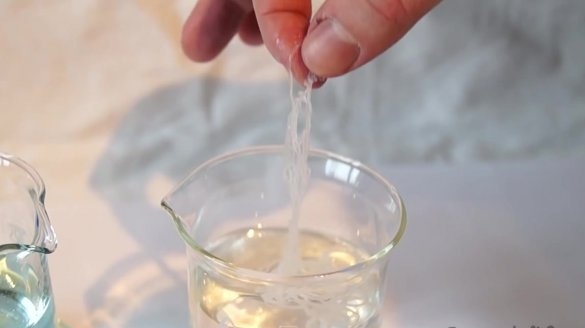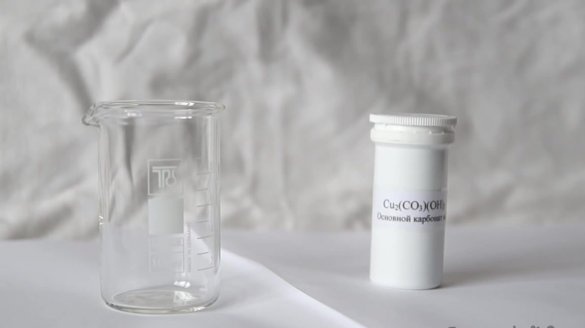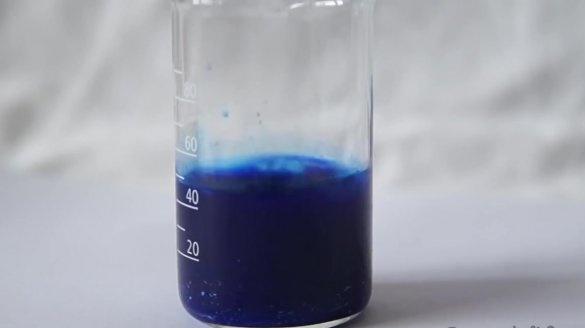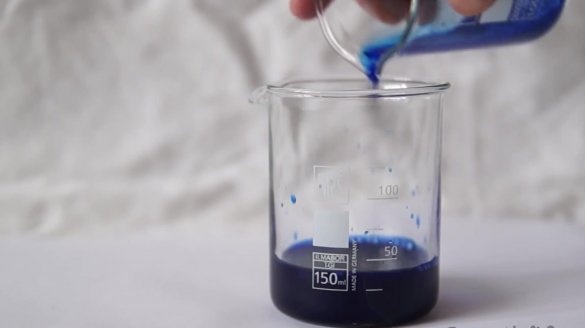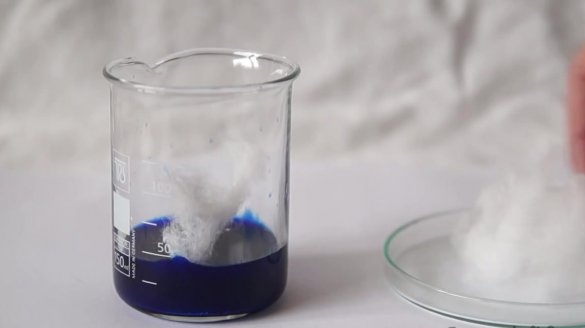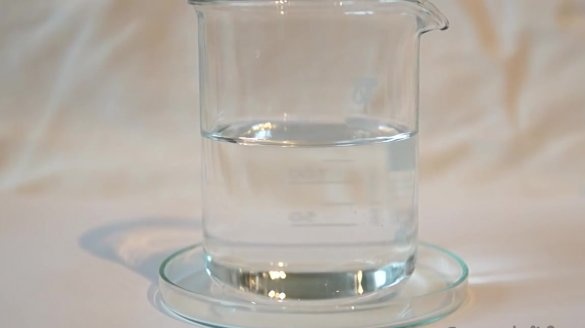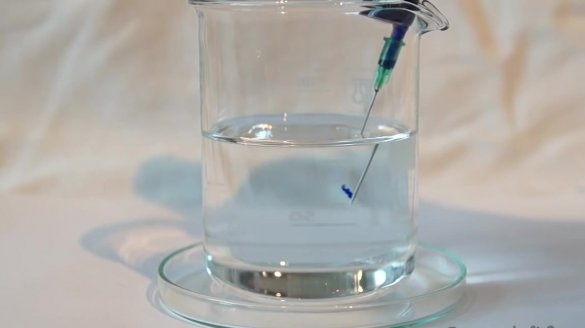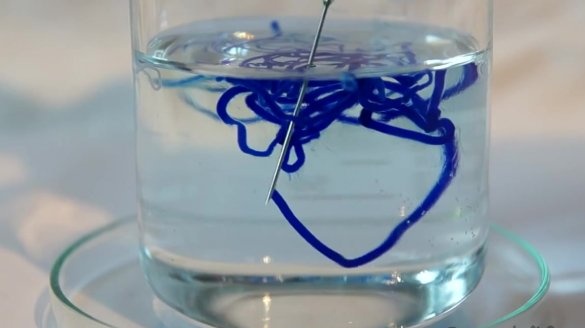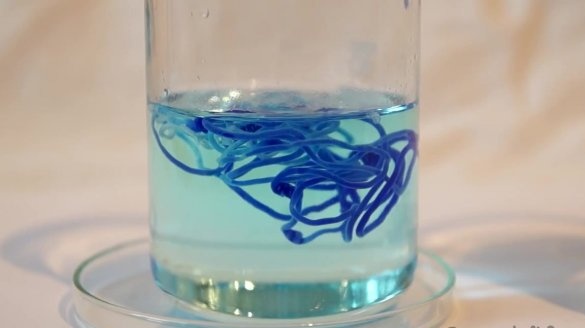Silk is used for sewing. This fabric was first obtained in China from silkworm cocoon. As several centuries ago, and today, natural silk is very respected and costs a lot of money. However, technological progress has allowed to obtain this fabric in an artificial environment. This time we get this fabric chemically.
We offer you to familiarize yourself with the process of chemical experience in the author’s video
So we need:
- basic copper carbonate;
- a glass;
- concentrated ammonia solution;
- cotton wool.
Basic copper carbonate can be obtained by reacting chemicals such as copper sulfate and baking soda.
Take a glass and weigh about 4 grams there. basic copper carbonate. Note that copper carbonate is a chemical that has a greenish tint.
Pour 40 ml of 25 percent ammonia solution into a glass. Pour the ammonia solution into a glass with basic copper carbonate.
During this process, it is possible to observe the formation of complex shading of copper, as a result of which the mixture turns saturated blue. It should be noted that copper carbonate does not fully interact with ammonia, as a result of which a small amount of sediment remains at the bottom of the glass.
Pour the liquid into another glass so that the solution is clean.
Now we have a complex compound of copper, which has a rather interesting property. Cotton wool can be dissolved in this compound.
To do this, take a gram of well-fluffed cotton wool and slowly add it to the complex compound.
Vata dissolves in an excellent way and viscose forms. This is a kind of raw material that can be used to produce artificial silk. Dissolve all the cotton, after which the liquid that was in the cup becomes thick.
To get artificial silk you need to prepare a unimolar solution of sulfuric acid. We pick up a little viscose into the syringe, put on a needle and slowly begin to squeeze the raw materials into a solution of sulfuric acid.
In this case, we can observe a very unusual effect.When viscose begins to come in contact with sulfuric acid, cotton wool or cellulose, which is in viscose, begins to polymerize again.
Sulfuric acid enters into a chemical reaction with a complex compound of copper, as a result of which it dissolves. When extruded, blue threads form.
After some time, the acid reacts with the complex compound and washes copper salts from our fibers, and the fibers become discolored. In this case, the sulfuric acid solution turns blue, since copper sulfate and carbon dioxide are formed during the reaction.
As a result of this, we get colorless fibers that feel like silk.

